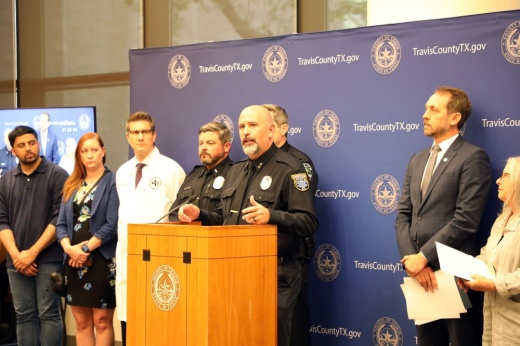The Travis County Medical Examiner’s office is investigating eight deaths believed to be caused by fentanyl overdoses April 29 through the morning of April 30. TCME will complete toxicology testing and release preliminary results in the next couple of days, Chief Medical Examiner Keith Pinckard said.
Local leaders are encouraging residents to carry Narcan, an overdose-reversal drug, and know the signs of an overdose amid the outbreak.
What happened
Overdose calls began downtown around 9 a.m. April 29 and eventually spread to North, South and East Austin. The overdoses occurred in individuals in their mid-20s to mid-50s and across all ethnicities, genders and socioeconomic statuses, ATCEMS Assistant Chief Steve White said.
ATCEMS typically handles one or two overdose calls per day. Yesterday's tally of 51 calls marked a 1,000% surge in overdose-related calls and Austin’s highest volume of overdoses since 2015, White said.
The response
Paramedics administered dozens of doses of Narcan to individuals experiencing an overdose and distributed 267 Narcan kits to residents in neighborhoods with high call volumes, officials said.
Austin Police Department Assistant Chief Eric Fitzgerald credited EMS personnel, the Austin Fire Department and several civilians who administered Narcan with saving dozens of lives.
“Opioid overdose deaths are completely preventable, and everyone in Travis County should be aware and prepared to respond to an overdose incident,” Travis County Judge Andy Brown said. “Everyone should carry Narcan and know how to respond to an overdose.”
The Austin Police Department detained two individuals considered persons of interest, one of whom was arrested for possession of a firearm; however, further investigation is needed before pressing any charges, APD officials said.
Know the signs
Austin-Travis County health authority Desmar Walkes urged the community to recognize the signs of an overdose and be prepared to intervene. Signs of an overdose include:
- Small pupils
- Confusion or loss of consciousness
- Slow breathing
- Cool and pale skin
- Low response level to stimulus





